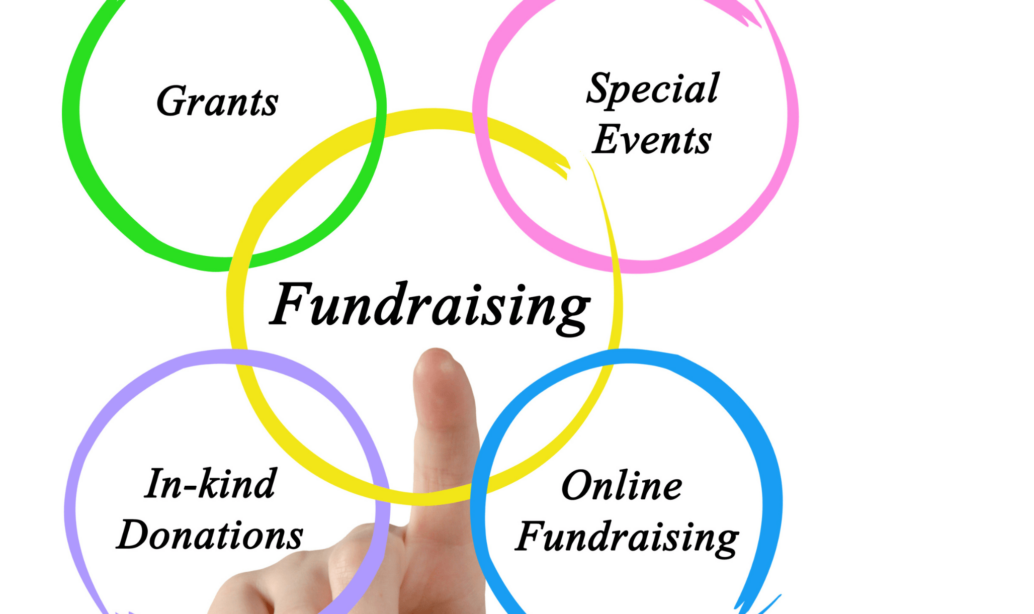
NANOE HotelPlanner Travel Provider of Choice
August 16, 2023
[PODCAST] How to Grow a Small Non Profit Organization
August 19, 2023Why Nonprofits Should Integrate Marketing & Fundraising

Why Nonprofits Should Integrate Marketing & Fundraising
At many nonprofits, the marketing and fundraising teams work separately. One may handle all emails, social media accounts, and advertising, while the other cultivates donors and plans events. While this separate approach can work, nonprofits miss out on major benefits by keeping marketing and fundraising apart.
Here’s why you should integrate these two essential elements of your nonprofit.
1. Fundraising IS marketing.
The goal of marketing is to raise awareness about what your organization is doing and to sell what you have to offer. The “sale” for your nonprofit may look different than for for-profits; instead of selling products, your nonprofit may use marketing to connect new people to your services, get new volunteers, or raise money.
Your fundraising team is trying to sell something, too. They’re trying to convince donors that your organization is worth investing in. This is often done through the same channels and with the same approaches that marketers use: emails, social media posts, newsletters, and even ads. Your fundraising team will lean on classic marketing strategies to secure donations, like crafting powerful stories, creating a sense of urgency to donate, and showing the value of what your organization has to offer.
Fundamentally, there are few differences between fundraising and marketing. By bringing together your fundraising and marketing teams, you can leverage your marketing expertise to create the most powerful fundraising efforts. You’ll also be able to use your fundraising team’s experience to inform your broader marketing efforts, meaning both teams—and both their goals—will benefit from integration.

2. Fundraising and marketing reach the same audiences.
Your best donors often already support your work. This includes volunteers, people you help, and engaged community members. Your donors and general supporters are not separate groups. They all have a common interest in your work.
When you communicate with these groups separately, you risk tiring your supporters. Your donors and supporters may not know which messages are from marketing or fundraising. They just notice the volume of messages like ads and emails. If fundraising and marketing don’t collaborate, you’re more likely to overwhelm your most engaged supporters. This is a common way nonprofits lose email subscribers, social media followers, and small donors.
By integrating marketing and fundraising, you can ensure proper communication frequency with supporters. You can provide consistent messaging across channels. This is key to cultivating long-term donors and supporters.
3. Integrating efforts lets you pool resources.
Nonprofits often have tight budgets. Adding staff is a major expense. Combining marketing and fundraising helps maximize staff time. It prevents duplicating work. Instead of separate teams writing emails and posts, one person can oversee communication for both. This frees up your team for more outreach, donor connection, and other key tasks. You can fully utilize your team and budget this way. You can achieve your goals without adding staff.

4. Marketing = stewardship.
Donor stewardship is the way to turn one-time donors into recurring, lifelong donors. By cultivating relationships with your donors, you can ensure your organization will be top-of-mind the next time they’re looking to give. You can also ensure your donors feel appreciated and that their donation matters, no matter how big or small it is.
Your marketing efforts won’t just bring in new donors—they’re part of the stewardship journey for your existing donors. Sharing the new and exciting things happening at your organization can be an excellent way to steward individual donors and corporate sponsors. By keeping them up-to-date about your big developments or opportunities to get involved, your donors will feel invested in your work and will be excited to keep supporting you.
5. Your organization needs one voice.
Your organization’s voice includes how you speak about your work, what language you use, and whether your tone is formal or casual. When your organization has a cohesive voice, supporters (and potential supporters) will be able to recognize your organization across communications and more easily connect with it. An inconsistent brand voice can confuse supporters and make them wonder if your team is on the same page about how your organization wants to present itself publicly.
An organization is more likely to have an inconsistent voice when its teams aren’t collaborating, such as with separated marketing and fundraising teams. Your marketing team may be using a casual tone on social media while your fundraising team is sending emails to donors with a more formal tone. One team may be using an entirely different set of terminology to talk about your work than the other team. This makes it difficult for supporters and other donors to understand what you do and how they should speak about it to others. This also makes it tough for new staff or board members, who may be unsure of the “correct” way to talk about the organization based on your teams’ different communication styles.

By merging your fundraising and marketing efforts, you can ensure everything your organization puts out into the world has the same message, tone, and impact. Your fundraising and marketing staff can work together to determine the best ways to speak about your work, finding a balance that resonates with both groups’ goals and needs.
6. Integration ensures everyone is invested in the same goals.
When your teams are siloed, your marketing and fundraising teams often set and work toward separate goals. Your marketing staff may focus on building an audience and driving new clients to your nonprofit. Meanwhile, your fundraising staff concentrate on cultivating new donors. While the teams may incidentally support each other’s goals, they are not invested in achieving them.
Integrating your marketing and fundraising teams helps ensure your staff strive for the same goals. Their support of one another becomes intentional instead of incidental. When marketing experts back a fundraising campaign, they do not feel sidetracked from their main work. Rather, they feel part of achieving a shared goal.
How To Integrate Marketing & Fundraising

Integrating marketing and fundraising can feel daunting. Your nonprofit may have longstanding teams with their own systems. Integration should happen slowly and carefully. This ensures confidence in the new setup.
A good first step is gathering everyone together. If the teams don’t know each other, introduce them. Have people share duties. Note responsibility overlaps. Understand each team’s strengths and weaknesses. Encourage voicing concerns early so you can address them.

Once you understand what both teams are working with, have both teams share their goals. What have the marketing and fundraising teams been working towards? Where do those goals overlap? How can each team help the other achieve those goals? It will likely take multiple meetings to understand how your combined teams can best work together. You may also want to encourage team members to meet individually with those who do similar work on the other team to get a more in-depth understanding of each other’s strengths and how they may want to divide work up between them.
As you integrate the two teams, be sure to check in often, both with individual staff members and with the group as a whole. There are many concerns that could arise during this process, and it’s important to catch them early. Some staff members could feel that work is being taken away from them or that they’re being “demoted.” Others may worry about reporting structures, management, or who will be ultimately responsible for various aspects of the work. Regular communication can assuage any fears and ensure logistical kinks are worked out before they become larger issues.

Integration isn’t an overnight process. Your teams may initially feel some discomfort about sharing their work with one another. But by creating a safe environment for the teams to share, connect, and collaborate, you can ensure they’ll reap all the benefits of integration. Your team will be able to make the most of everyone’s unique skill sets, pool resources, and present your organization with a unified voice.
The post Why Nonprofits Should Integrate Marketing & Fundraising appeared first on Nonprofit Hub.
